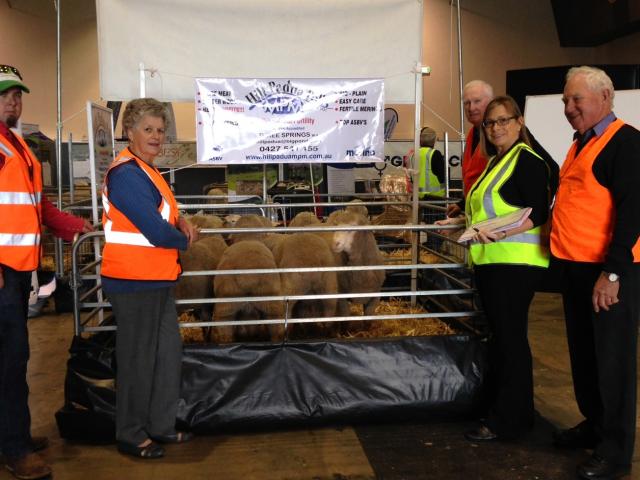The Fit to trade bulletin promotes government and industry partnership across the biosecurity systems that protect and enable Western Australia's livestock businesses to trade into domestic and international markets.
Taiwan trade delegation examines biosecurity programs in WA
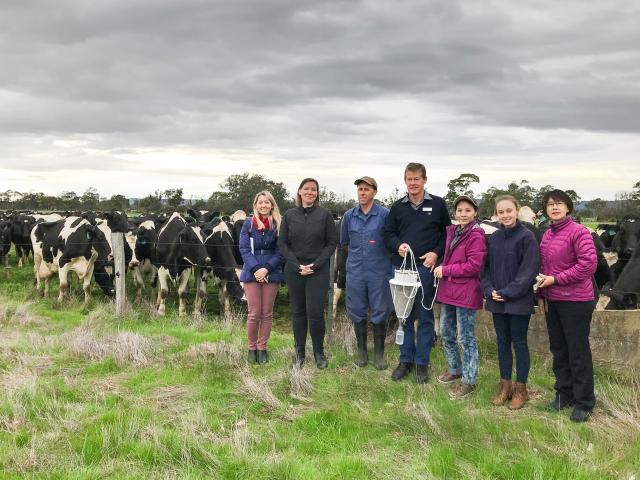
Australia’s National Arbovirus Monitoring Program (NAMP), enzootic bovine leucosis (EBL) status in dairy cattle and on-farm biosecurity were the focus of a recent visit to Western Australia by a delegation from the Taiwanese Bureau of Animal and Plant Health Inspection and Quarantine (BAPHIQ).
Taiwan imports a small number of Australian dairy heifers annually, which are flown from eastern Australia. With increasing milk prices in Taiwan, it is expected that demand for Australian dairy heifers will continue to grow and this may provide a potential opportunity for WA industry.
During the WA visit, WA Chief Veterinary Officer Michelle Rodan provided an overview of the Department of Primary Industries and Regional Development (DPIRD) Livestock Biosecurity program. Dr Rodan summarised the key systems that underpin WA’s high animal health status, including animal health surveillance, disease control and traceability. She also outlined how DPIRD partners with private veterinarians and industry to deliver these systems.
DPIRD NAMP Coordinator Marion Seymour explained how the sentinel herd testing and vector monitoring provided under NAMP scientifically demonstrates the distribution of bluetongue virus. Australia remains free from clinical disease due to bluetongue infection, which enables us to trade into bluetongue-sensitive markets.
The Taiwanese delegates also travelled to Bunbury where they inspected Warrick and Emma Tyrrell’s Waterloo dairy.
“The delegates were impressed with our on-farm arrangements for bluetongue surveillance under the NAMP, which include regular blood testing of sentinel animals and close monitoring of the vector traps,” Dr Tyrrell said.
“They were also interested in how we manage the cattle during summer given Taiwan is situated across the tropic of Cancer and can be hot and humid. I explained how we graze the shaded paddocks with silage during the day and the open irrigated pastures at night.”
During the Bunbury visit, Western Dairy Research and Extension Officer Jessica Andony provided an overview of the local industry to the delegates.
“Delegates particularly wanted to know more about the EBL-free status of WA dairy herds and how the EBL program is regulated as well as on-farm biosecurity efforts to minimise the risk of Johne’s disease in WA cattle,” Ms Andony said.
The WA Cattle Industry Funding Scheme funds the annual surveillance required to achieve EBL free status in WA in addition to funding the surveillance for Johne’s disease in cattle and its regulation.
The weeklong visit by the trade delegation was arranged by the Department of Agriculture and Water Resources (DAWR) and also included visits to dairy farms and a laboratory in New South Wales.
DPIRD biosecurity gains international expertise
International experience across biosecurity, market access, animal welfare and industry engagement is just some of the expertise Katherine Clift brings to her new role as Executive Director Biosecurity at the Department of Primary Industries and Regional Development.
Dr Clift joined DPIRD on 30 July 2018 after three years in Brussels, Belgium, where she had responsibility for managing New Zealand’s relationship with Europe across plant health, animal health and food safety, and negotiating market access for agricultural products.
She previously held roles at the New Zealand Ministry for Primary Industries (MPI), leading the Biosecurity Response and Biosecurity Surveillance areas to ensure the country was well prepared to manage risks to the primary industries sector and the environment. Highlights of her time at the MPI included successfully eradicating Queensland fruit fly in New Zealand in 2014 as well as a joint industry-government project to improve New Zealand’s readiness to respond to a foot-and-mouth disease outbreak.
Dr Clift said she was delighted to join DPIRD and to play a part in shaping the future of the department’s biosecurity systems.
“Our current systems support Western Australia’s continued access to domestic and export markets and protect our industries and communities from the impact of pests and diseases,” Dr Clift said.
“Threats to biosecurity continue to evolve and it’s important that we continually look for ways to make these systems more robust.
“A strong focus on partnership with industry and continuous improvement are essential to the State’s biosecurity future.
“Working with industry to identify new ideas and pragmatic solutions is an important element of my mandate.
“I look forward to engaging with industry to better understand their concerns so we can work together to build a better future for biosecurity in WA,” Dr Clift said.
Dr Clift grew up on a sheep and cereal farm in South Australia and received her veterinary degree from Murdoch University and her Masters in Veterinary Public Health Management from the University of Sydney.
Spotlight on traceability at LambEx 2018
The recent gathering of national and state sheep industry bodies at LambEx 2018 in the Perth Convention and Exhibition Centre provided an opportunity to demonstrate the traceability systems that support Western Australia’s high sheep biosecurity status.
Department of Primary Industries and Regional Development (DPIRD) Stock Identification and Traceability Operations manager Beth Green worked with LambEx organisers to ensure sheep exhibited at LambEx met traceability requirements.
“Meeting national and Western Australian livestock traceability requirements is a critical part of maintaining the State’s high biosecurity status and access to markets,” Ms Green said.
“With effective traceability systems, WA is able to assure our domestic and export markets that our livestock are free of harmful diseases and residues.
“Sometimes producers may assume that completing the traceability requirements for events such as LambEx is unnecessary because the animals will be returning to the home property – but this is not the case.
“All movements from one property identification code (PIC) to another must be recorded on the National Livestock Identification System (NLIS) database to maintain traceability.
“In the case of LambEx, the department assisted organisers by creating a PIC for the Perth Convention and Exhibition Centre, as every place that is used to keep animals, even temporarily, must have a PIC.
“The 12 producers who exhibited 86 head at LambEx all completed separate waybills for travel to and from the Perth Convention and Exhibition Centre PIC and I assisted with transferring their stock between their home PIC and the convention centre PIC on the NLIS database,” Ms Green said.
“It was great to meet with producers and grower group members throughout LambEx to answer their queries about using the NLIS database. Once people have seen a demonstration of how the system works, most of them comment that it is far less complicated than they had thought it would be.
“I am always happy to attend grower group and other industry meetings to demonstrate NLIS and using the database.
“If producers or industry have any queries about traceability, they can contact the department on 1300 WA NLIS (1300 926 547).”
Foot-and-mouth disease experience will help protect WA
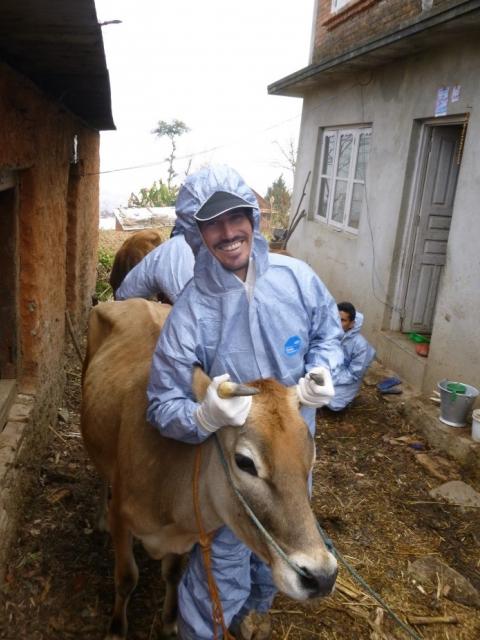
The importance of biosecurity at all levels and understanding how to respond to signs of foot-and-mouth disease were the key lessons for Broome Cattle Vets director Bryce Mooring from a recent training course in Nepal.
Dr Mooring said the course provided “a first-class education for vets and livestock industry members in every facet of foot-and-mouth disease”.
“Australia currently is foot-and-mouth disease free and it is in our best interests to endeavour to remain this way,” Dr Mooring said.
“Foot-and-mouth disease is a highly contagious, acute viral disease affecting cloven-hooved animals, including pigs, cattle, sheep and goats. This disease has caused disastrous economic and social impacts in countries that have been infected with it.
“One single outbreak of foot-and-mouth disease in Australia has the ability to cripple our livestock industry and close trade with all international markets.
“In order to ensure we are prepared to recognise and respond to foot-and-mouth disease if it occurs in Australia, government and industry fund private and government vets and agricultural industry members to travel to Nepal where the disease is common.
“There we learned how to identify, sample and test for foot-and-mouth disease as well as practising biosecurity protocols to avoid spreading the disease.
“The training was one of the best short courses I have ever attended with the course mentors sharing a wealth of experience,” Dr Mooring said.
“Participants gained a solid theoretical understanding of foot-and-mouth disease, including the DNA structure of the virus, how it replicates and modifies with new infections, the different strains and the epidemiology of the disease.
“We also examined the procedures in place for its control should an outbreak occur in Australia and how it would impact our livestock industry as a whole.
“The course also gave us the opportunity to enter the field under a full quarantine protocol (including protective clothing, clean zone, dirty zones) and to clinically diagnose foot-and-mouth disease in cattle, goats and pigs.
“Our groups worked up cases as we would in Australia: we took samples from infected animals and had them tested at the Kathmandu laboratory to support our diagnosis and used epidemiological tools and case histories to trace back where the infection started and trace forward to where it may have reached.
“Our groups were also able to discuss the disease with Nepalese farmers and provide recommendations for treatment of the disease as well as biosecurity measures to prevent infection.
“In summary, it was an incredible opportunity to see this disease firsthand and it cemented my belief in how important biosecurity is in protecting our Australian industry now and into the future,” Dr Mooring said.
The FMD real-time training program is part of the ‘Australian Government’s Agricultural Competitiveness White Paper, the government’s plan for stronger farmers and a stronger economy’; and is cost shared between the Australian Government, certain state and territory jurisdictions, and industry organisations.
The course was delivered by the European Commission for the Control of Foot-and-Mouth Disease, a Commission of the Food and Agriculture Organization of the United Nations.
You can find out more about how to recognise the signs of foot-and-mouth disease on the DPIRD website or visit the EU site at https://eufmdlearning.works/.
Vet workshops to result in improved disease diagnoses
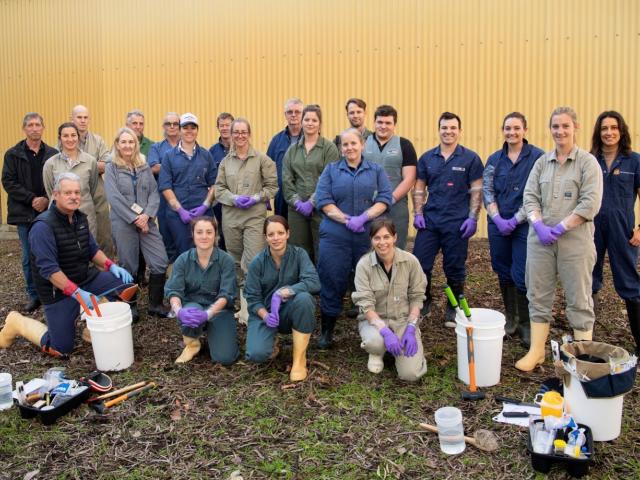
When you think about Australia’s ability to demonstrate that we are free of specific livestock diseases, how your vet sharpens their knives might not be the first thing that you consider.
But correctly sharpened knives are just one of the many enablers for gathering samples for accurate laboratory diagnosis. And accurate laboratory diagnoses underpin Australia’s ability to export our livestock and livestock products.
More than 40 Western Australian veterinarians gathered in South Perth recently to attend practical workshops designed to hone their skills in livestock disease investigations.
The workshops were coordinated and facilitated by the Department of Primary Industries and Regional Development with funding provided from the Agricultural competitiveness white paper through the Department of Agriculture and Water Resources.
DPIRD Animal Health Surveillance manager, Marion Seymour, said that the workshops were designed to strengthen the knowledge of WA private and government vets of how to approach livestock disease investigations and provide skills sessions like knife sharpening that make conducting a full investigation possible in the busy schedule of a private vet.
“The workshops covered every aspect of a disease investigation with the aim being to hone WA vets’ skills in obtaining a history and samples that will maximise the likelihood of a diagnosis, while at the same time protecting the biosecurity and health of all involved in the process,” Dr Seymour said.
“Topics covered included the key information to gather, how to catch, restrain and euthanase livestock, how to diagnose disease in animals that have been dead for a long time, how to describe lesions, practical biosecurity to protect both vets and their clients, as well as how to sharpen knives and scissors safely – the key tools of a post-mortem.
“An important focus of the workshops was to increase awareness of what vets should do if they suspect an emergency animal disease such as foot-and-mouth disease and the support and resources DPIRD can provide,” Dr Seymour said.
Other topics covered during the first workshop included sampling and testing for bovine anaemia and Theileria orientalis group (BATOG), Hendra vaccination and certifying animals as fit to load.
In a following smaller workshop, vets practised collecting samples and brain removal techniques while being supported to conduct a sheep post-mortem.
“Understanding how to remove the brain so it is suitable for testing for transmissible spongiform encephalopathies such as scrapie in sheep is vital so that sufficient submissions can be made to support Australia’s freedom from these diseases,” Dr Seymour said.
“Demonstrating that we are free of such diseases protects our access to domestic and export markets for sheep and sheepmeat.”
Dr Seymour said feedback from the workshops had been overwhelmingly positive, with participants noting that they would be applying the techniques and information learned to their daily work.
The workshops were led by well-known veterinary consultant Tristan Jubb from Livestock Health Systems Australia and included presentations from Australian Animal Health Laboratory (AAHL)’s Mark Ford, Western Australia’s Chief Veterinary Officer, Michelle Rodan, Portec veterinarian Vanessa Morris and DPIRD pathologists and veterinarians.
To learn more about WA’s livestock biosecurity systems and how they support market access and food safety, see the videos on our Youtube playlist.
New 1300 number to strengthen livestock traceability
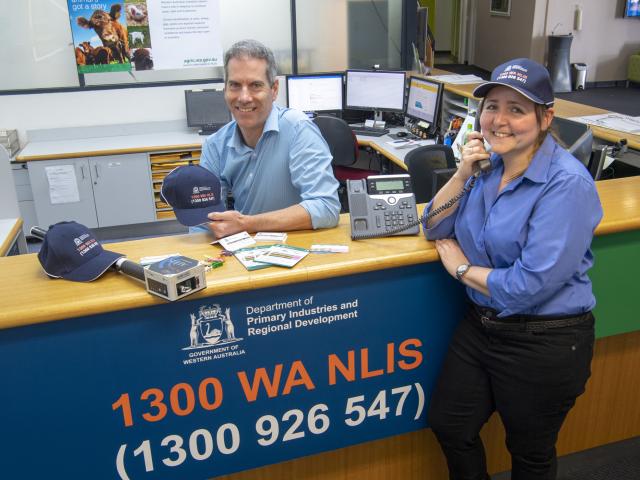
The Department of Primary Industries and Regional Development has introduced a single phone number for all enquiries related to livestock brands and National Livestock Identification System (NLIS) requirements.
1300 WA NLIS (1300 926 547) will now be the one stop shop for producers, agents, saleyards, abattoirs or anyone within the WA livestock industry requiring assistance with registering or identifying stock, property identification codes (PICs), or for support with any aspect of the NLIS process.
Department Livestock Biosecurity Director Peter Gray said having one point of call would make it easier for industry to meet livestock traceability requirements, which would benefit the entire industry.
“Domestic and international markets expect our livestock and livestock products can easily be traced should there be a food safety incident or disease outbreak,” Dr Gray said.
“Accurate and complete traceability information is vital to underpin our export of meat and livestock and the new 1300 number will make it easier for support to be provided.
“Responsibility for our traceability system begins with producers when they register with the department to own livestock and are issued with a stock brand, PIC and registered identifiers.
“Each individual animal must then be identified using the registered identifiers appropriate for each species.”
The movements of livestock through the supply chain or from property to property must be accompanied by a paper or electronic waybill which provides details of the consignment.
These details are then recorded in the web-accessible NLIS database, which is used to store and correlate the movement data and associated details across all jurisdictions.
The 1300 number will operate during business hours and connect callers through a menu system directly to a department technical or administrative officer who can answer their enquiry.
This will enable the department to better monitor enquiries and target communication and advice toward areas that receive higher numbers of calls.
Producer fined for footrot quarantine breach
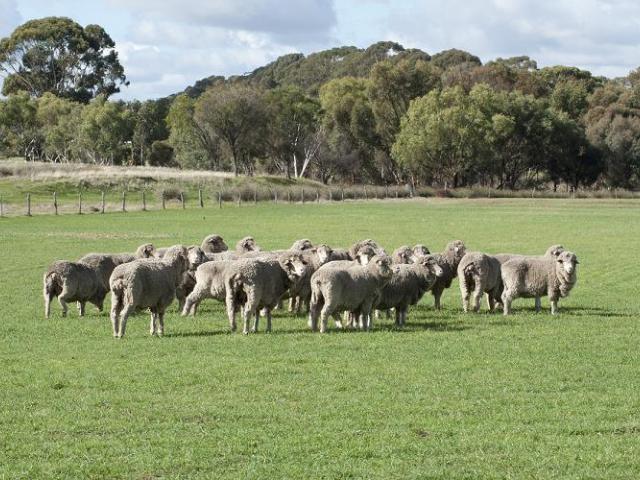
A WA sheep producer has been prosecuted for failing to comply with a quarantine notice under the State’s Biosecurity and Agricultural Management Act following the detection of virulent footrot in his sheep flock.
The Denmark Shire producer pleaded guilty to five charges of failing to take adequate precautions to prevent his sheep leaving the quarantined property and potentially spreading footrot to neighbouring properties. The producer was fined $3000 and ordered to pay court costs of $359.
The Department of Primary Industries and Regional Development carries out a footrot control program for the WA sheep industry to limit the financial and welfare impacts of virulent footrot.
Department veterinarian Jenny Cotter said virulent footrot could spread when infected sheep come into contact with uninfected sheep.
Dr Cotter said footrot bacteria was able to transfer from an infected sheep’s foot to soil and faeces and, under the right conditions, onto the feet of uninfected sheep in the same paddocks.
“Sheep flocks with virulent footrot are placed under quarantine to restrict the movement of sheep from these properties until the infection has been eradicated,” Dr Cotter said.
“The quarantine notice also directs that fence and gate security must be maintained to ensure sheep remain within the quarantined property.”
Department senior compliance inspector Mike Donaghy said in this case, sheep had strayed to neighbouring properties on several occasions between 2016 and 2017, and the producer had not taken sufficient action to prevent this.
“The WA sheep industry invests significant funding to control the spread of virulent footrot across the State, and producers are required to take the necessary steps to prevent infected sheep straying off their property,” Mr Donaghy said
Virulent footrot is a bacterial infection of the inter-digital skin on sheep’s feet that causes lameness and productivity losses.
Feedback and subscriptions
The Department of Primary Industries and Regional Development values your feedback. To provide your comments about the Fit to trade bulletin or to suggest article topics, email livestock.biosecurity@dpird.wa.gov.au
The Fit to trade bulletin is produced three times a year. To subscribe or to see previous issues, visit the webpage.


